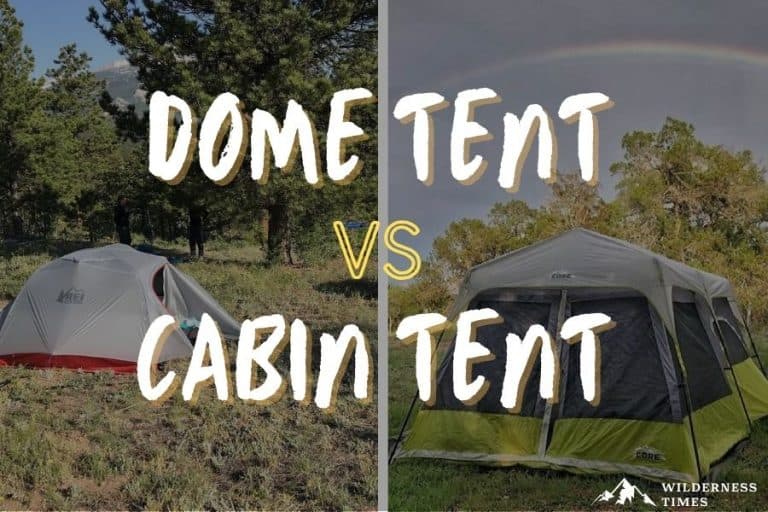Shopping for a new tent?
With so many options on the market, the choice can be pretty difficult.
In fact, deciding on the type of tent is the hardest part. You’ve got the dome tent, cabin tent, bell tent, tunnel tent, ridge tent, geodesic tent, inflatable tent, the list goes on.
Dome and cabin tents are the most popular types, but which one is better?
There’s no uniform answer to this question. Each of these tents is designed for specific situations, and it all comes down to what you need.
But don’t worry. To make your job a little bit easier, I’ve pointed out both the qualities and disadvantages of each type in this article. Hopefully, this will help you make the cut.
So without further ado, I present to you the ultimate showdown: dome tent vs cabin tent. Let’s see how these tents compare:
Table of Contents
ToggleWhat Is the Main Difference Between a Dome Tent and a Cabin Tent?
One thing that’s clear from the start is the difference in shape between these two types of tents. But what does that difference mean in practice?
Due to the shape, cabin tents simply offer more room to move freely inside the tent compared to a dome-style tent.
Between the two, a cabin tent is simply a better option if you plan on spending some time inside the tent aside from sleeping.
But on the other hand, a dome tent offers more protection from the wind and elements.
If you plan on camping in the shoulder seasons, or more extreme conditions, you’ll most certainly want a dome tent.
What is a dome tent?
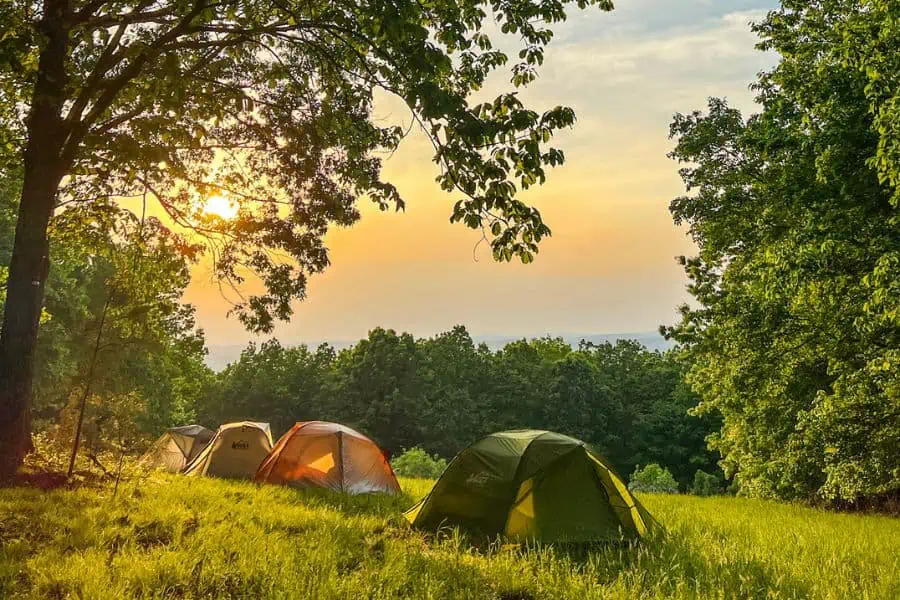
Dome tents seem to be the most popular type of camping tent these days.
They come in different sizes and some models are even suitable for winter camping.
These tents are freestanding, meaning they don’t need staked guylines to keep them in place. This is especially useful when camping on rough terrain, because you don’t have to worry about all sides of the tent being tight and secure.
Instead of supporting guylines, this type of tent features intersecting poles that hold the whole thing together.
Setting them up is easy, and it shouldn’t take you more than 10 minutes. Nowadays, you can also find pop-up dome tents that pitch in a blink of an eye.
But crisscrossed poles aren’t amazing just because they make setup easy. They also give the tent the stability to withstand different weather elements. You’ve probably noticed that most 4-season tents feature a dome shape.
This type of tent is ideal for windy weather. It has a lower, aerodynamic profile. This means it doesn’t act as a wind obstacle. Instead, its shape allows the air to stream smoothly over the roof.
But a dome tent is not great just in high winds. This kind of tent performs well in rainstorms, too.
In most cases, dome tents feature a rain fly that goes all the way to the ground and keeps your tent dry. Plus, the shape makes the rain slide off the walls, so there’s no possibility of water buildup on the roof.
Pros:
- Stable even during high winds
- They don’t require lots of tent stakes and ropes to be secure
- They’re lightweight and can be compactly packed
- Setting up is easy even if it isn’t an instant tent
- There are a lot of 4-season models on the market
Cons:
- Dome shape doesn’t allow you to use all the floor space equally
- This type of tent is basically just a sleeping area
Best for: Backpackers and campers who expect to encounter windy or rainy conditions.
What is a cabin tent?
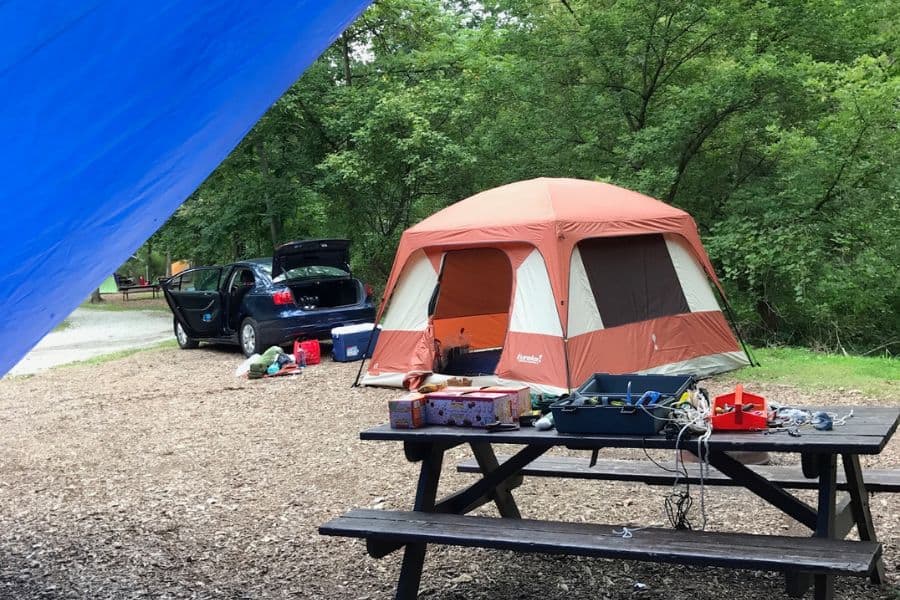
Unlike dome tents, cabin tents feature almost vertical walls. This makes them look like a cabin, hence the name.
They’re designed to give you more space inside to move around.
In fact, a lot of cabin tents are high enough that you can stand up straight and walk around in them. Unless you’re as tall as Yao Ming, that is.
And since they come in different sizes, you can find one large enough for all your camping buddies and their stuff – no matter how big your crew is. This makes them perfect for family camping trips.
Thanks to almost vertical walls, you can really make the best use of the space inside. For example, you can put your queen-size air mattress in the corner and still have plenty of headroom.
Larger cabin tents usually have a room divider. These are great features to have in a family tent, as they allow you to create a separate area for kids or a couple camping with you.
But that’s not the only thing it’s good for. You can also use the divider as a movie screen. Bring your projector on a camping trip, and enjoy your favorite movies with friends and family.
Most cabin tents have large windows, and to me, that’s a good enough reason to opt for this kind of tent. Now, you probably won’t spend the majority of your camping trip inside a tent. But when you’re in there, you can enjoy the view along with the great airflow these windows provide.
Windows are great during nice weather, but they’re a tad problematic when it’s raining. You have rain panels to prevent the water from getting in, but at the same time, you’re restricting the airflow inside the tent.
Lots of cabin-style tent models have a mesh roof. During nice summer evenings, you can enjoy stargazing from the comfort of your sleeping bag. There’s no better feeling than sleeping under the starry sky. And it’s great for relieving stress and boosting creativity, too.
Cabin tents usually come with a rain fly that covers only the ceiling. It makes sense – what’s the point of those beautiful windows if they’re hidden underneath the rainfly? In fact, some models are made of waterproof tent fabric and don’t have a fly at all.
But for that same reason, this type of tent is not ideal for heavy rains. And not because they’ll leak – which they won’t. As a result of their shape, there’s a possibility of water gathering on the roof, which will weigh down the tent.
That, in turn, makes the tent less stable altogether. This is just basic physics here.
You have a few poles holding the tent up. Water is heavy, and will push the tent down toward the ground.
Add wind to the equation, and you could have a recipe for disaster. Vertical walls act like sails on a boat, and the wind blows directly into them. In heavy winds, these things will shake like a hula doll.
Of course, you can offset this, by investing in a high-quality canvas cabin tent.
Pros:
- Plenty of headroom, so you can comfortably sit or even stand up
- Vertical walls give you more inside space than other types of tents
- Multiple windows that provide great ventilation
- Large tent models usually have room separators, so you can feel even more at home
Cons:
- They can be quite heavy and bulky, which makes them unsuitable for backpacking
- Vertical walls easily catch on the wind, which puts more strain on the tent pole frame
Best for: Families and those who want more space in their tent when camping.
Dome Tent VS Cabin Tent
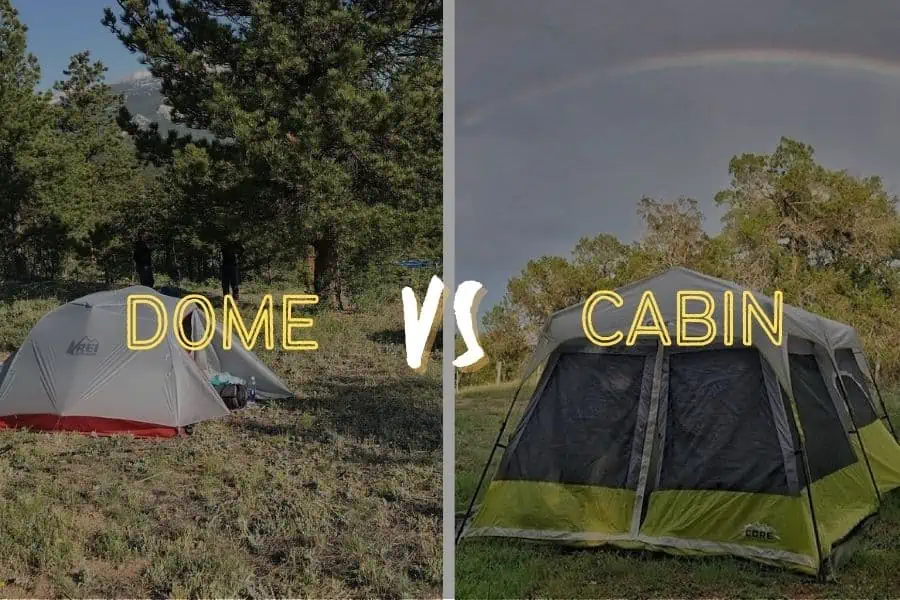
Even though the differences between these two types of tents appear to be obvious, the choice is not always easily made.
The best way to find out which type is most suitable for your camping needs, is to decide which factors matter the most to you.
Size/Space
Pitch both types of tents next to one another, and the difference in space is pretty self-explanatory.
Obviously, exceptions exist on both sides. But generally, cabin tents are way higher than dome tents.
In addition to that, dome tents have a peak height at the center, and they curve down towards the edges.
That means you can’t use the floor space equally. You can put your gear next to the walls, but your air mattress probably won’t fit.
Cabin tents, on the other hand, allow you the best use of the space.
The entire roof is at an equal height and the walls are practically vertical, so you can arrange the inside however you like. If you hate crouching, this is the tent for you.
So it really comes down to what you need the tent for. If you plan on just sleeping inside, a dome tent will give you shelter over your head. But, if you plan on hanging out inside the tent as well, a cabin might be a better option.
What’s more, cabin tents are more suitable for larger camping groups. Aside from allowing you to use the interior to its fullest potential, they usually have a room divider, which can give you some kind of privacy.
Portability
Generally, cabin tents are designed with extra comfort in mind. More space obviously means more material, and that makes them more suitable for car camping than they are for backpacking.
They also feature plenty of poles which are usually pretty heavy too.
Dome tents, on the other hand, are focused more on practical aspects, and that’s why they’re more convenient for use as a backpacking tent.
Usually, they only require a few intersected poles to keep the whole thing secure.
Setup
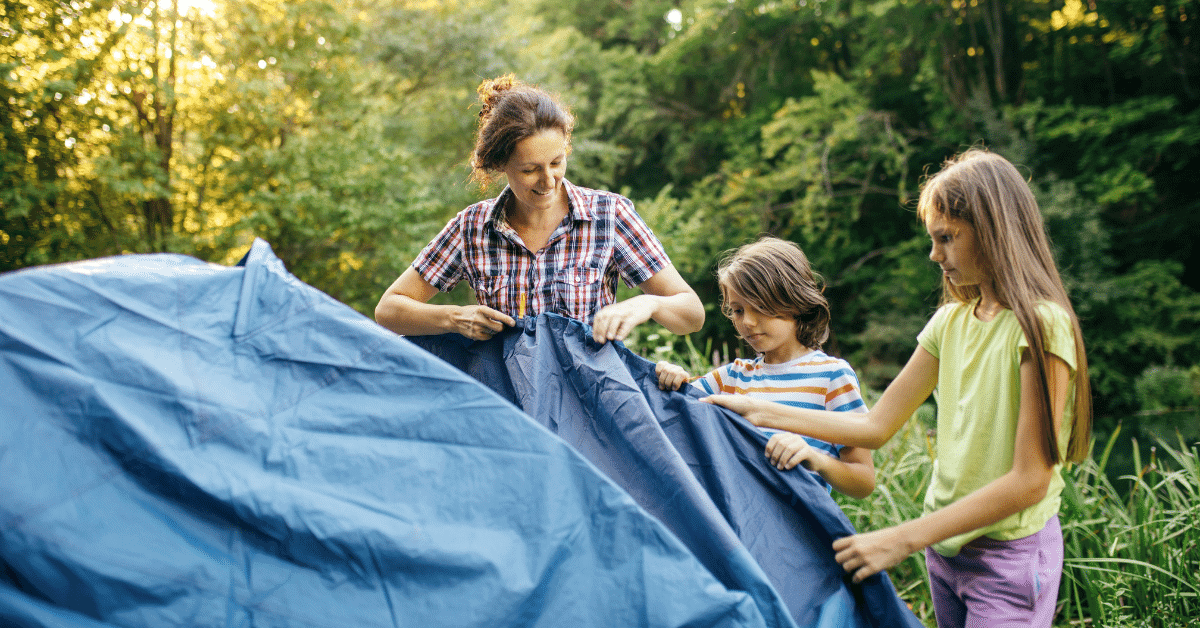
If you’ve ever used an old army non-freestanding tent, you know what struggle is. Keeping a stake upright while adjusting guyline tension is a type of skill that comes with practice.
Thankfully nowadays, this kind of hassle is non-existent.
Today, camping brands are competing to make tents that take almost no time at all to set up.
And us, campers, are glad such a time has come.
Instant and pop-up tents are a thing, so you can find both dome and cabin tents that require almost no effort to pitch. If ease of setup is your most important criterion when buying a tent, both a pop-up or instant tent are excellent options.
Weather Resistance
When it comes to weather resistance, a dome tent leads all the way.
As I’ve already mentioned, their shape allows the wind to go over them smoothly, while vertical walls on cabin tents act as a sail.
With dome tents, snow and rain aren’t an issue, either. Precipitation simply slides off the walls onto the ground.
Cabin tents have flatter roofs, so there’s a possibility of water gathering on the top.
Tent Performance in the Rain
Dome tents perform much better in rainy weather compared to cabin tents.
Their shape allows rainwater to simply slide off the roof and onto the ground.
Furthermore, dome tents tend to have a long rainfly that reaches the ground, meaning it provides better shelter from the rain.
Many cabin tents have somewhat flat roofs, so there’s always a possibility of rainwater collecting and causing it to sag.
What’s more, many cabin tents have a shorter rainfly that only covers the top part, leaving walls and vents exposed to rain.
Tent Performance in Wind
The situation is similar when it comes to windy weather.
For pretty much the same reason, dome tents perform better in such weather, because their sloping walls are more aerodynamic compared to ones on the cabin tent.
Read: How Much Wind Can A Tent Withstand?
Affordability
Generally, cabin tents come at a somewhat larger price.
It makes sense.
They’re designed for comfort, and that’s luxury.
You don’t really need to have that much headroom, do you?
We pay more to have more space in cars and houses, don’t we?
So it only makes sense the same goes for tents, right?
Ease of Use
When it comes to ease of use, both types of tent are pretty similar in this category.
You could say that cabin tents have a slight edge, simply because of their size and the fact that most of them are designed to be pitched instantly.
However, it depends a lot on the model, so you can also find dome tents that are easier to use than cabin tents.
Durability
To make it clear – no tent will last you a long time if you don’t take adequate care of it.
This is going to come down to the tent brand you’ve chosen and the materials used to make the tent.
It’s also going to depend on the weather conditions your tent encounters, the number of days you camp per year, etc.
If you’ve invested in a dome tent with aluminum poles and high-quality fabric, it will definitely be more durable than most cabin tents.
However, there are many cabin tents that are made with very sturdy materials, including canvas.
So both cabin and dome tents can both have great durability, but I would give the edge to the dome tent overall due to its ability to hold up better in bad weather.
Dome Tents vs Cabin Tents – Compared
FAQs
What are the advantages of a dome tent?
Dome tents offer a good middle ground. They’re typically lightweight and affordable, yet very good at withstanding all kinds of weather conditions.
They’re also easy to set up, making them a great option for different camping trips.
What are the advantages of a cabin tent?
Cabin tents offer plenty of space for sleeping, storing your gear, and even hanging out when it’s a bad weather day.
Cabin tents also tend to be better in their quality dollar for dollar, as they’re using sturdy but heavy materials, like canvas.
Are dome tents good?
Dome tents are a good option regardless of your trip. Whether you’re weekend camping, car camping, backpacking, or even trekking, you can’t go wrong with a dome tent.
They also perform well in different weather elements, so they’re suitable for camping almost all year round.
Where would you use a dome tent?
A dome tent is a great choice whenever you’re camping in windy or rainy weather.
Furthermore, they’re great for different types of terrain, as they do a pretty good job of staying pitched in both sand and snow.
Which tent is best for a family (dome or cabin)?
Cabin tents are better for family camping, as they offer much more room inside (especially standing room).
Larger models often feature a room divider, which allows you to separate kids from adults, especially if they take a nap during the day.
What is the strongest-shaped tent?
Between the two, dome tents are much stronger. But geodesic tents are even sturdier than dome tents, as they feature multiple crossover poles which improve their stability.
The Final Verdict
Neither of these two types of camping tent is overall better than the other.
They’re designed with different things in mind, so in the end, it all depends on your personal preference and tent camping requirements.
If I had to define both tents with only one word, I’d say cabin tents are all about comfort, while dome tents give you the ultimate versatility.
So, which one speaks to you more?


